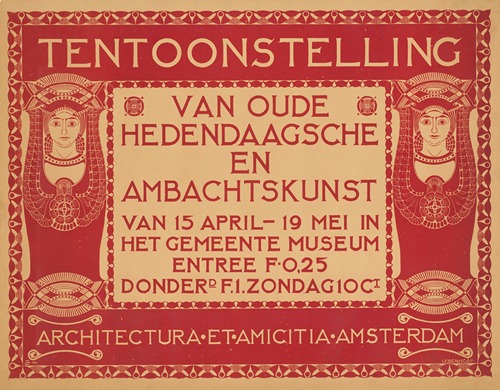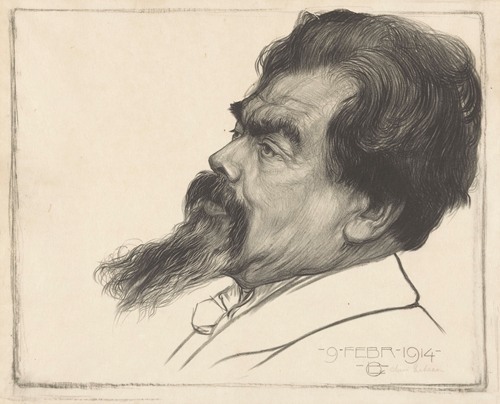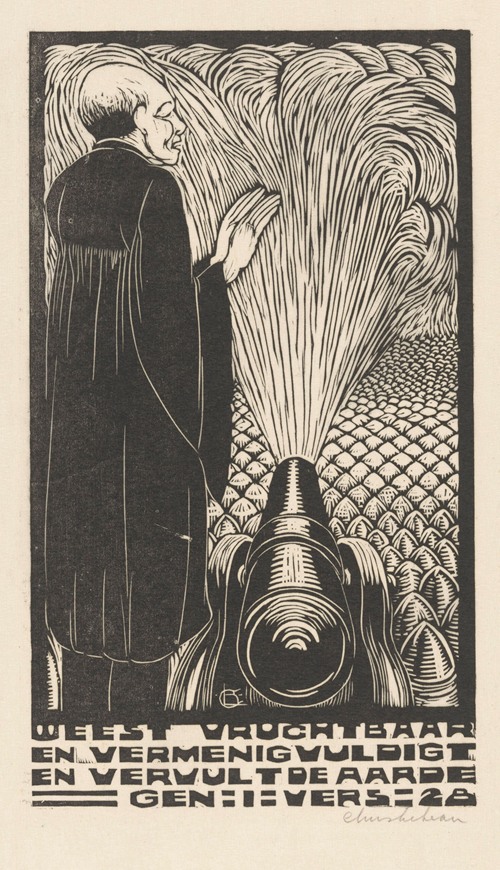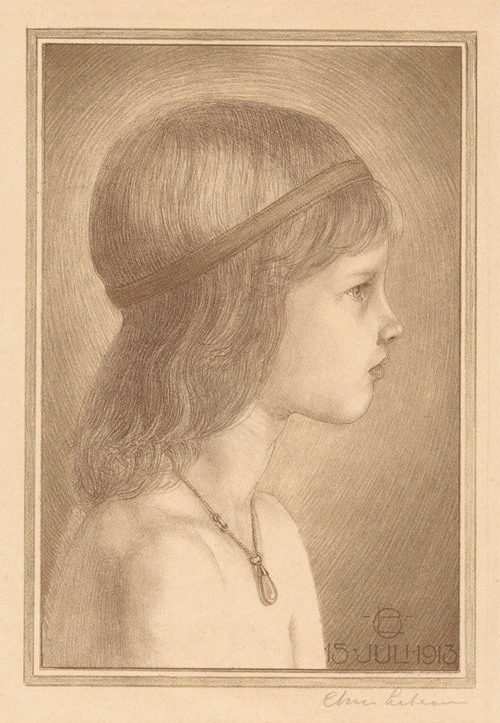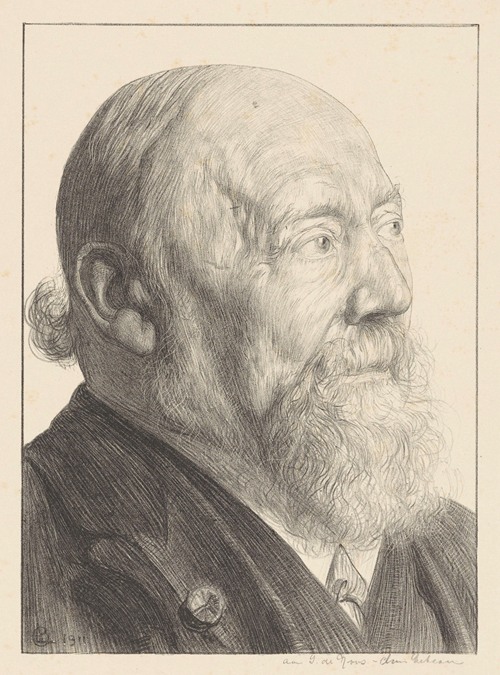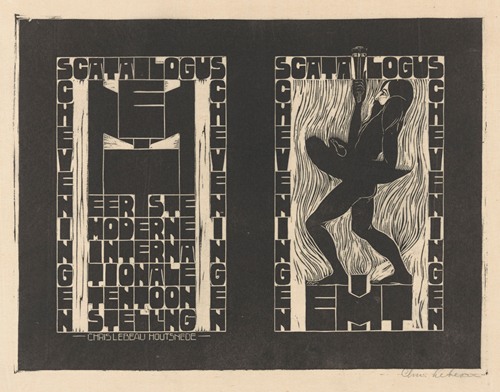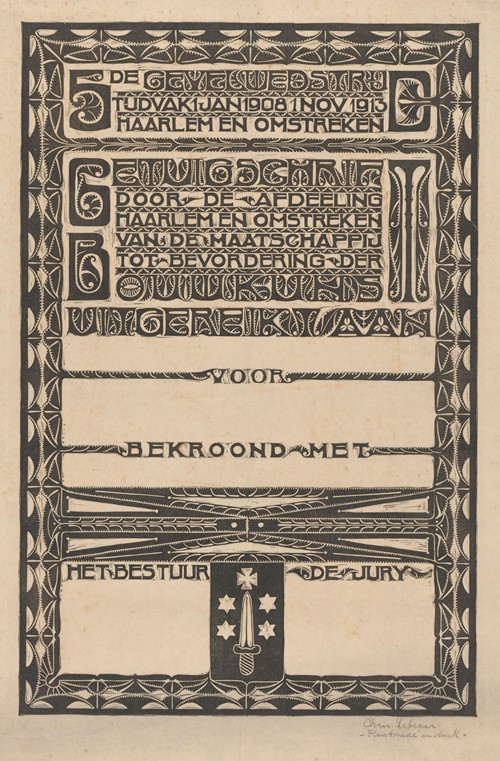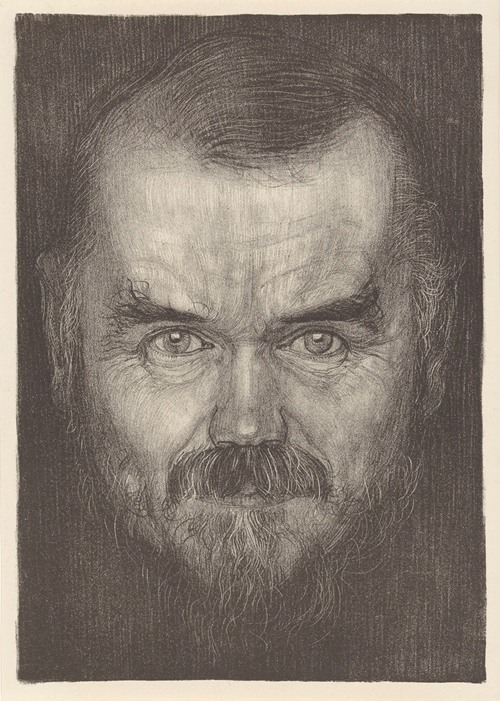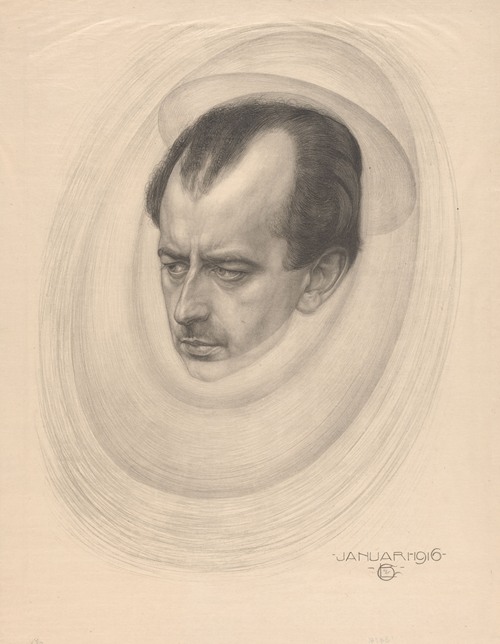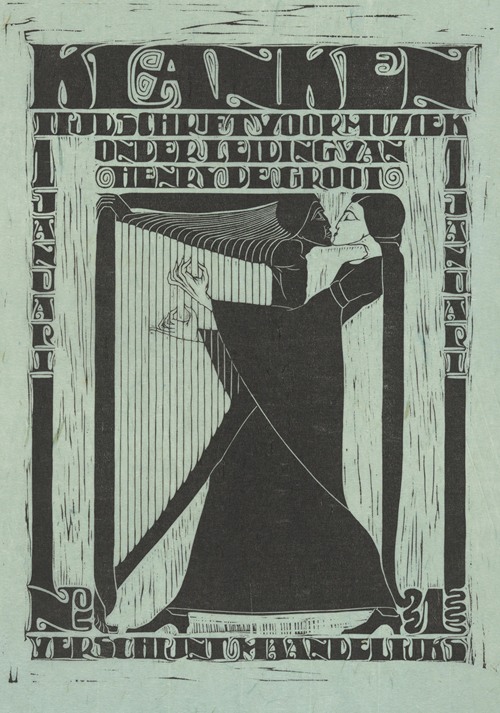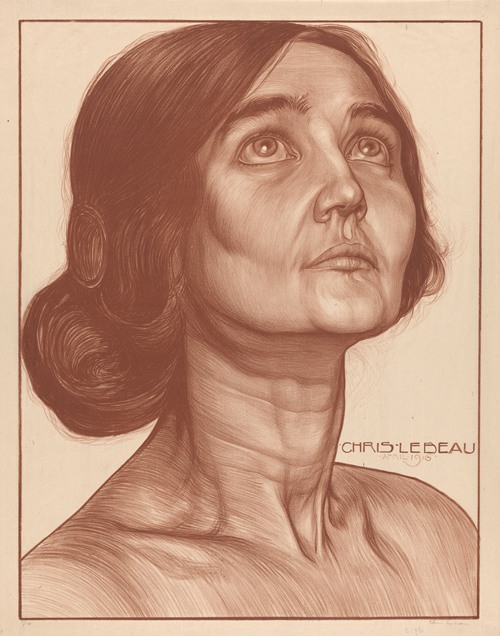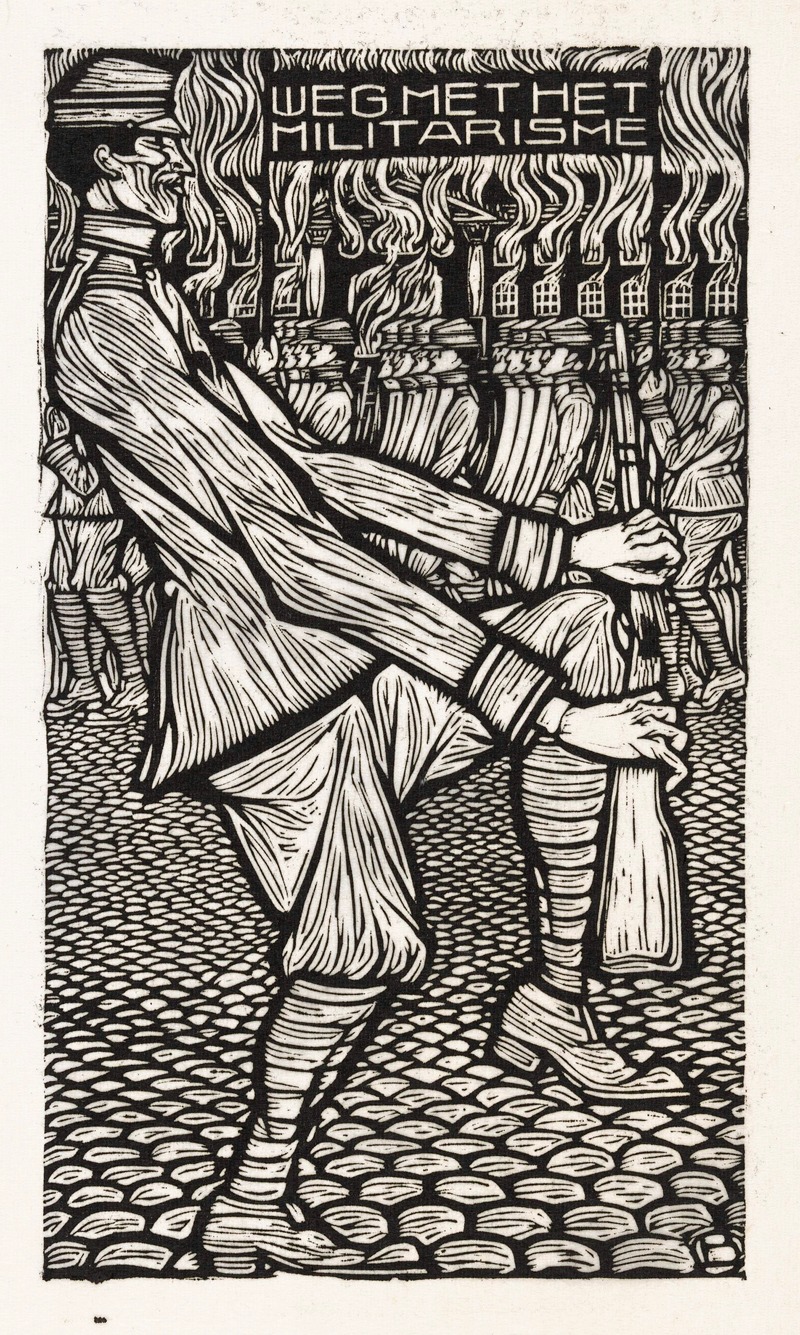
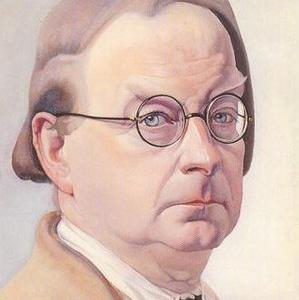
An influential early twentieth century Dutch artist, Chris Lebeau gained fame for his paintings, prints, sculpture, work in the book arts, textile designs, glass work, designs of theater interiors, and batik art. He was also a leading communist and anti-militarist. Tragically, this made him a victim when the Germans invaded Holland during the Second World War and he was imprisoned and died at the concentration camp of Dachau.
Chris Lebeau studied art techniques at the Quellinusschool, Amsterdam (1892-1895) the Kunstniiverheidsschool, Amsterdam (1895-1899) the Rijksacademie, Amsterdam, under Professor A. Allebe (1901-1903), and at the Academy of Antwerp (1905-1908).
Influenced by the art and ideas of William Morris, Lebeau's early art exhibited distinct art nouveau elements. Some of his most famous art is his design work for the Astatheater in the Haag (1920), the Amsterdam Statehouse (1927) and the 'Oud-Katholieke Kerk', in Leiden (1928). As well, between 1923 and 1926 Chris Lebeau worked with the leading Dutch glassworks, NV Glasfabriek Leerdam.
